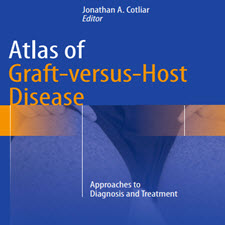Alzheimer’s disease: synaptic dysfunction and Aβ
ABSTRACT
Synapse loss is an early and invariant feature of Alzheimer’s disease (AD) and there is a strong correlation between the extent of synapse loss and the severity of dementia. Accordingly, it has been proposed that synapse loss underlies the memory impairment evident in the early phase of AD and that since plasticity is important for neuronal viability, persistent disruption of plasticity may account for the frank cell loss typical of later phases of the disease. Extensive multi-disciplinary research has implicated the amyloid β-protein (Aβ) in the aetiology of AD and here we review the evidence that non-fibrillar soluble forms of Aβ are mediators of synaptic compromise. We also discuss the possible mechanisms of Aβ synaptotoxicity and potential targets for therapeutic intervention.
INTRODUCTION
Alzheimer’s disease (AD) is an irreversible, progressive brain disorder that slowly destroys memory and cognitive skills. It is the most common human dementia and as such confers a huge emotional and economic burden on patients, caregivers and society . Age is the most significant risk factor, with the chance for developing AD doubling every five years after 65 . However, the disease can also strike in mid-life and so- called early-onset AD (EOAD) is designated as dementia developing before 65 years old. Fortunately EOAD is rare with an estimated incidence of 4.2 per 100,000 persons in the 45-64 year age group . The cognitive and pathological changes evident in EOAD and late onset AD (LOAD) are highly similar with the former apparently an accelerated form of the more common LOAD. Because many EOAD cases have a strong Mendelian inheritance pattern they have proved instructive in identifying key gene products involved in the disease process. Specifically, autosomal dominant mutations identified in familial AD all appear to converge on altering the processing of the amyloid precursor protein (APP). The precise onset of clinical AD is difficult to discern but is often manifested as subtle and intermittent deficits in episodic memory. After many months of gradually progressive impairment of first declarative and then also nondeclarative memory, other cognitive symptoms appear and slowly advance. Over a further period of years a profound dementia develops that affects multiple cognitive and behavioral spheres.
چکیده
از دست دادن Synapse یکی از ویژگی های اولیه و غیرمعمول بیماری آلزایمر (AD) است و بین میزان تلفات سیناپس و شدت زوال عقل همبستگی قوی دارد. بر این اساس، پیش بینی شده است که از دست دادن سیناپس نقص حافظه در فاز اولیه AD را نشان می دهد و از آنجایی که پلاستیک برای زنده ماندن نورون مهم است، اختلال پوسیدگی پایدار ممکن است باعث از دست دادن سلول فرانک معمولی در مراحل بعدی بیماری شود. تحقیقات گسترده چند رشته ای، پروتئین بتا-آمیلوئید (Aβ) را در علل التهاب AD منعکس کرده است و در اینجا شواهدی مبنی بر این که فرم های محلول غیر فیبریلار Aβ، میانجی سازگاری سیناپسی هستند، بررسی می شود. ما همچنین در مورد مکانیسم های احتمالی آئروس سیناپتکتیکسیتی و اهداف بالقوه برای مداخله درمانی بحث می کنیم.
مقدمه
بیماری آلزایمر (AD) یک اختلال برگشت ناپذیر و پیشرونده مغزی است که به آرامی حافظه و مهارت های شناختی را از بین می برد. این شایع ترین بوی بد دهان انسان است و به همین ترتیب بار عاطفی و اقتصادی زیادی بر روی بیماران، مراقبین و جامعه تأثیر می گذارد. سن مهم ترین عامل خطر است، و شانس ابتلا به AD دو برابر شدن هر پنج سال پس از 65 سالگی است. با این حال، این بیماری همچنین می تواند در اواسط زندگی رخ دهد و به اصطلاح زودرس AD (EOAD) به عنوان زوال عقل پیش از 65 سالگی تشخیص داده شده است. خوشبختانه EOAD نادر است با برآورد تخمینی 4.2 در 100000 نفر در گروه سنی 45-64 ساله. تغییرات شناختی و آسیب شناختی که در EOAD مشهود است و AD (LOAD) دیرزمان بسیار شبیه به شکل ظاهری شتاب دهنده شایع تر LOAD است. از آنجاییکه بسیاری از موارد EOAD دارای یک الگوی ارثی ماندلیایی قوی هستند، در شناسایی محصولات ژن کلیدی درگیر در روند بیماری، آموزنده است. به طور خاص، جهش های سلولی اتوزومی غلظت شناخته شده در AD فامیلی به نظر می رسد که در تغییر پردازش پروتئین پیش ماده آمیلوئید (APP) همگرا می شوند. شروع دقيق علائم بالينی دشوار است که تشخيص داده شود اما اغلب به عنوان ضعف ظريف و متناوب در حافظه اپيزوديک ظاهر می شود. بعد از چند ماه به طور مداوم تضعیف پیشرفت حافظه اول و سپس غیر قابل انکار، دیگر علائم شناختی ظاهر می شوند و به آرامی پیش می روند. در طی یک دوره زمانی طولانی، زوال عقل عمیق گسترش می یابد که بر حوزه های مختلف شناختی و رفتاری تأثیر می گذارد.
Year: 2009
Publisher : BIOMED
By : Ganesh M Shankar and Dominic M Walsh
File Information: English Language/ 13 Page / size: 392 KB
سال : 1388
ناشر : BIOMED
کاری از : گانش شانکار و دومینیک م ولش
اطلاعات فایل : زبان انگلیسی / 13 صفحه / حجم : KB 392


![Alzheimer's disease synaptic dysfunction and Aβ[taliem.ir]](https://taliem.ir/wp-content/uploads/Alzheimers-disease-synaptic-dysfunction-and-Aβtaliem.ir_.jpg)
![Eye.in.Pediatric.Systemic.Disease.[taliem.ir] Eye.in.Pediatric.Systemic.Disease.[taliem.ir]](https://taliem.ir/wp-content/uploads/Eye.in_.Pediatric.Systemic.Disease.taliem.ir_.jpg)
![Vascular.Smooth.Muscle.(Structure.and.Function.[taliem.ir] Vascular.Smooth.Muscle.(Structure.and.Function.[taliem.ir]](https://taliem.ir/wp-content/uploads/Vascular.Smooth.Muscle.Structure.and_.Function.taliem.ir_.jpg)
![Neuroepigenomics.in.Aging.and.Disease.[taliem.ir] Neuroepigenomics.in.Aging.and.Disease.[taliem.ir]](https://taliem.ir/wp-content/uploads/Neuroepigenomics.in_.Aging_.and_.Disease.taliem.ir_.jpg)

![Pulmonary.Vasculature.Redox.Signaling.in.Health.and.Disease.[taliem.ir] Pulmonary.Vasculature.Redox.Signaling.in.Health.and.Disease.[taliem.ir]](https://taliem.ir/wp-content/uploads/Pulmonary.Vasculature.Redox_.Signaling.in_.Health.and_.Disease.taliem.ir_.jpg)
![Treatment of Inammatory Bowel Disease with Biologics[taliem.ir] Treatment of Inammatory Bowel Disease with Biologics[taliem.ir]](https://taliem.ir/wp-content/uploads/Treatment-of-Inammatory-Bowel-Disease-with-Biologicstaliem.ir_.jpg)
![THE ROLES OF HORMONES[taliem.ir] THE ROLES OF HORMONES[taliem.ir]](https://taliem.ir/wp-content/uploads/THE-ROLES-OF-HORMONEStaliem.ir_.jpg)
![From Nanotechnology to Nanomedicine Applications to Cancer[taliem.ir]](https://taliem.ir/wp-content/uploads/From-Nanotechnology-to-Nanomedicine-Applications-to-Cancertaliem.ir_-150x150.jpg)
دیدگاه خود را ثبت کنید
تمایل دارید در گفتگو شرکت کنید؟نظری بدهید!